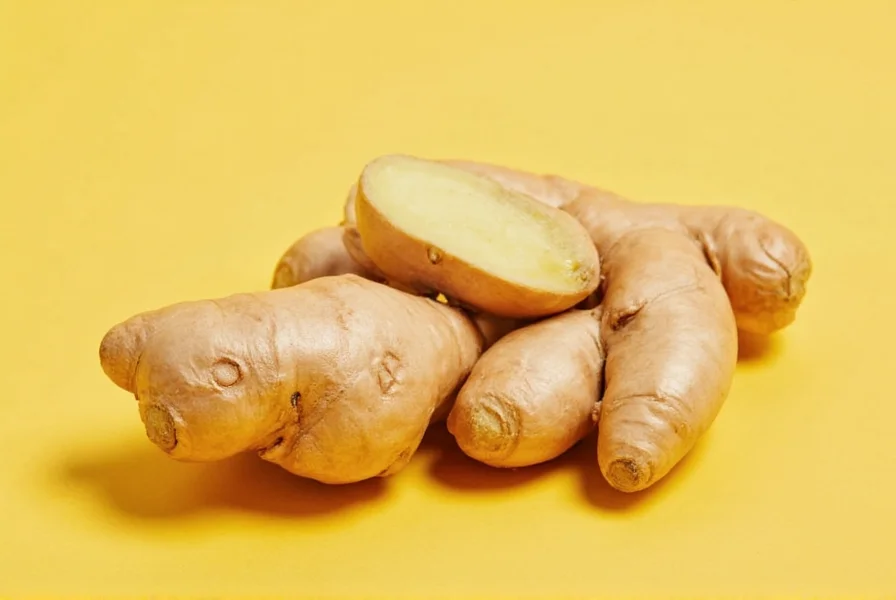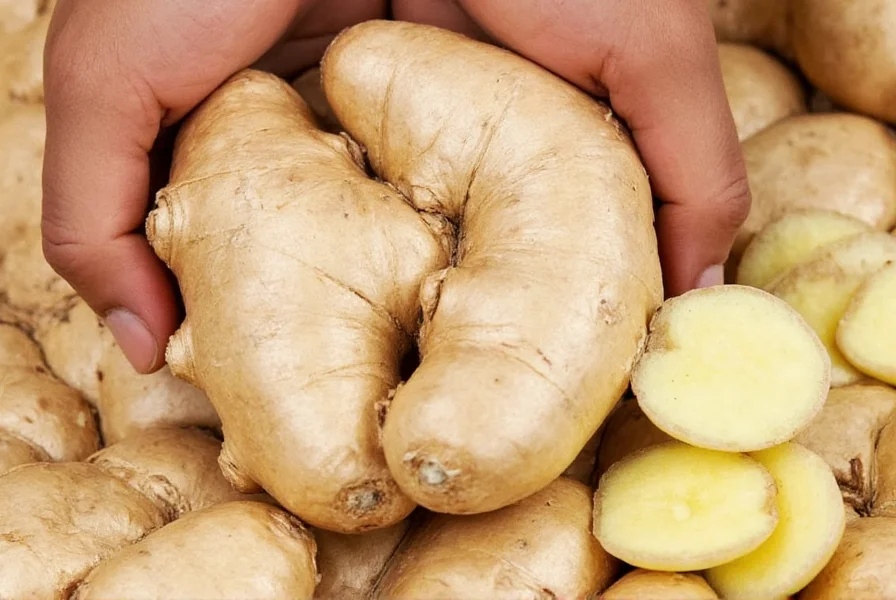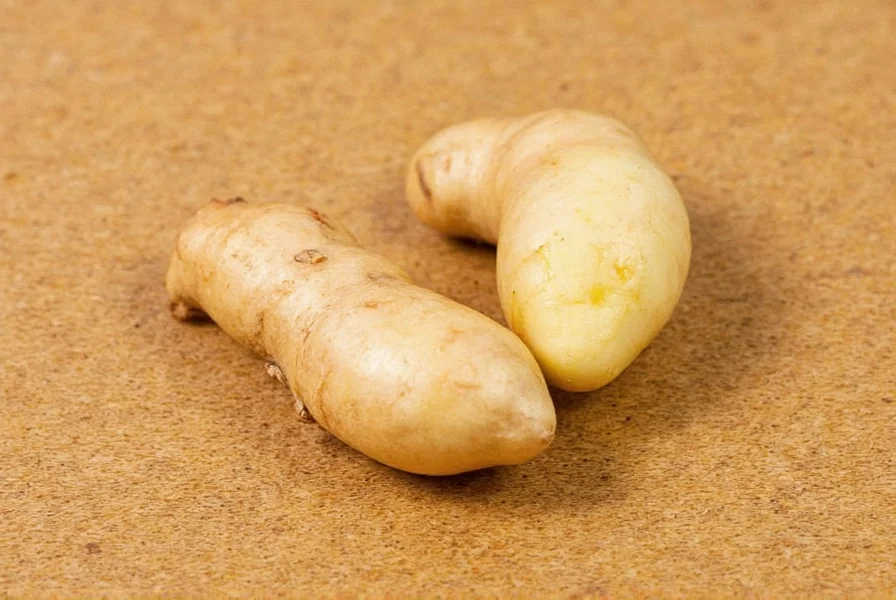When exploring the world of ginger varieties, "little ginger" specifically denotes these immature rhizomes that offer unique culinary advantages. Unlike their mature counterparts which develop thicker skin and more intense spiciness, young ginger maintains a tender consistency that requires minimal preparation. This characteristic makes it particularly valuable for raw applications where texture matters.
Understanding Little Ginger Varieties
Ginger (Zingiber officinale) produces "little ginger" when harvested between 90-150 days after planting. During this early stage, the rhizomes haven't fully developed their fibrous structure. The most common varieties that produce quality little ginger include:
| Variety | Harvest Time | Flavor Profile | Best Uses |
|---|---|---|---|
| Spring Ginger | 3-4 months | Mild, slightly sweet | Salads, sushi, raw applications |
| Baby Ginger | 4-5 months | Delicate heat, citrus notes | Pickling, stir-fries, beverages |
| Micro Ginger | 2-3 months | Very mild, almost floral | Garnishes, infused waters, delicate sauces |
Culinary Applications of Little Ginger
Chefs specializing in Asian cuisine particularly value little ginger for its versatility. The thin skin requires no peeling, and the tender flesh slices cleanly without stringiness. When substituting little ginger for mature ginger in recipes, use a 1.5:1 ratio since the younger roots have less concentrated flavor.
Professional kitchens often use little ginger in:
- Fresh sushi accompaniments where mature ginger would overpower delicate fish flavors
- Summer salads where its mild heat complements fresh vegetables
- Cocktail infusions that benefit from subtle ginger notes without overwhelming spice
- Preserves and pickles that maintain attractive presentation with translucent slices

Growing Little Ginger at Home
Home gardeners can successfully cultivate little ginger with proper timing. The key is harvesting at the optimal stage before the rhizomes develop tough fibers. In temperate climates, plant ginger rhizomes in spring after the last frost and harvest at 100-120 days for true little ginger characteristics.
Container growing works exceptionally well for little ginger production. Use pots at least 12 inches deep with well-draining soil. Maintain consistent moisture without waterlogging, and provide dappled sunlight. The first signs that your ginger is ready for little ginger harvest include:
- Visible rhizome tips emerging above soil line
- Stems reaching 12-18 inches tall
- Thin, almost translucent skin on the rhizomes
- Minimal fibrous development when gently scraped
Storage Techniques for Maximum Freshness
Due to their higher moisture content, little ginger roots require different storage approaches than mature ginger. Refrigeration in a paper bag (not plastic) maintains optimal humidity levels for 2-3 weeks. For longer preservation, many professional chefs recommend:
- Peeling (though often unnecessary with little ginger)
- Slicing into uniform pieces
- Submerging in dry sherry or rice vinegar
- Storing in airtight container in refrigerator
This method preserves texture and flavor for up to 6 weeks while enhancing the delicate flavor profile.
Health Benefits Comparison
While all ginger varieties offer health benefits, little ginger contains different concentrations of active compounds. Research shows young ginger has higher levels of certain volatile oils but lower concentrations of gingerols (the compounds responsible for heat). This makes it particularly suitable for:
- Individuals with sensitive digestive systems
- Children requiring ginger's medicinal properties
- Daily consumption where milder effects are preferred
- Topical applications due to less intense compounds

Common Misconceptions Clarified
Many home cooks confuse little ginger with other ginger varieties. It's not simply "small pieces" of mature ginger, but rather a distinct harvest stage. True little ginger cannot be replicated by cutting mature ginger into smaller portions, as the cellular structure and compound concentrations differ fundamentally.
Another frequent misunderstanding involves storage expectations. Little ginger naturally has a shorter shelf life than mature ginger due to its higher moisture content. Expect 2-3 weeks of optimal freshness compared to 3-4 weeks for mature roots when properly stored.
Practical Usage Tips
When incorporating little ginger into your cooking, consider these professional techniques:
- Add raw little ginger during the final plating stage to preserve its delicate flavor
- Use a mandoline for paper-thin slices that maintain structural integrity
- Pair with citrus elements to enhance its natural flavor notes
- Avoid high-heat cooking methods that diminish its subtle characteristics
For beverage applications, little ginger produces a smoother infusion without the bitter notes that sometimes develop when using mature ginger. Steep slices in hot water for 5-7 minutes for optimal flavor extraction without excessive heat.
Frequently Asked Questions
Can I substitute little ginger for regular ginger in recipes?
Yes, but with adjustments. Use 1.5 times the amount of little ginger to match the flavor intensity of mature ginger. Remember that little ginger provides a more subtle flavor and tender texture, so it works best in dishes where these qualities are desirable rather than when strong ginger flavor is required.
How can I identify true little ginger at the market?
Look for small rhizomes (1-3 inches long) with thin, almost translucent skin that you can easily scratch with your fingernail. The color should be pale yellow to light tan, not the darker brown of mature ginger. True little ginger feels moist and plump, not dry or fibrous.
Does little ginger have the same health benefits as mature ginger?
Little ginger contains similar beneficial compounds but in different concentrations. It has higher levels of certain volatile oils but lower concentrations of gingerols (the compounds responsible for heat and some medicinal properties). This makes it gentler on the digestive system while still providing anti-inflammatory benefits, though potentially less potent for certain therapeutic applications.
Can I grow little ginger indoors year-round?
Yes, ginger grows well indoors in containers. Use a pot at least 12 inches deep with well-draining soil, maintain temperatures between 70-85°F (21-29°C), and provide indirect sunlight. Harvest at 100-120 days for true little ginger characteristics. Indoor growing allows for year-round production regardless of climate.











 浙公网安备
33010002000092号
浙公网安备
33010002000092号 浙B2-20120091-4
浙B2-20120091-4